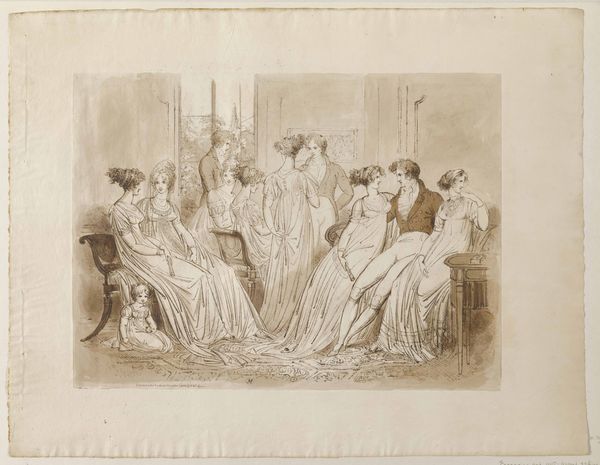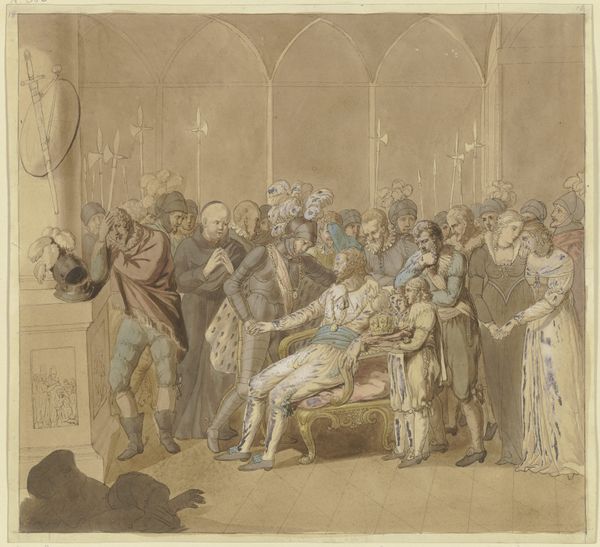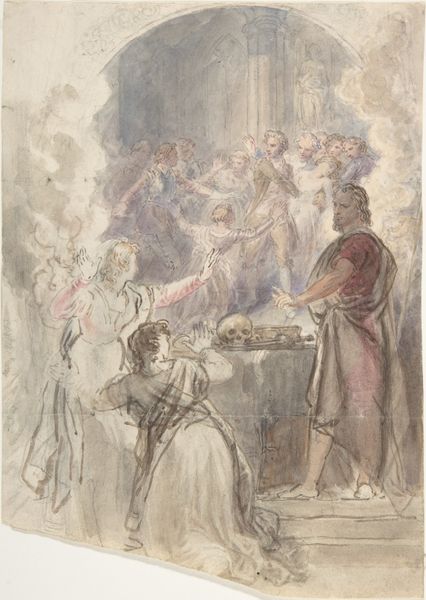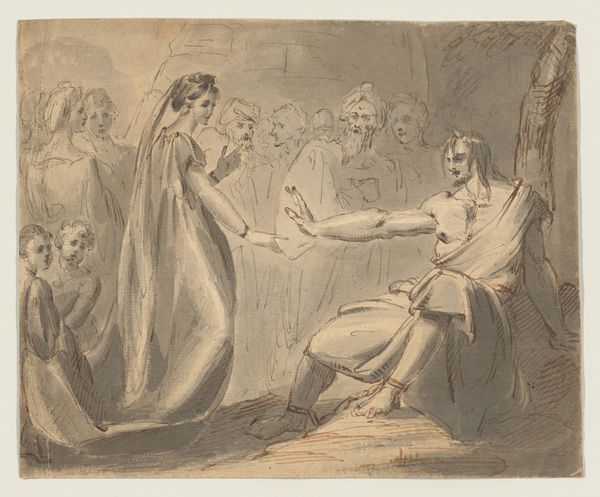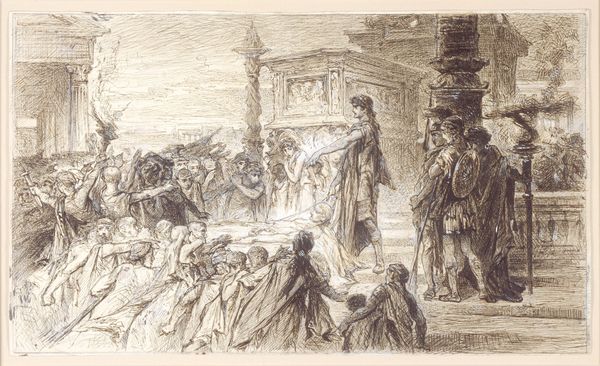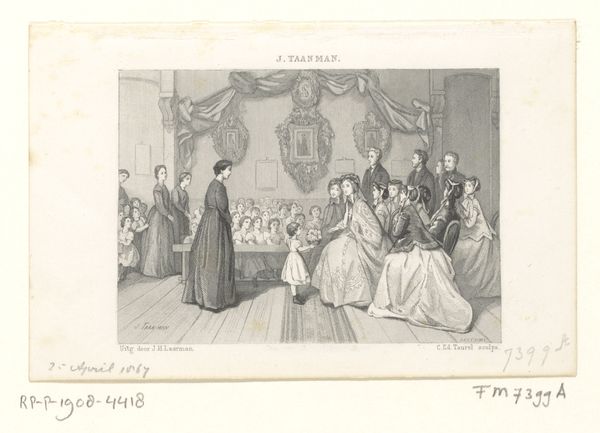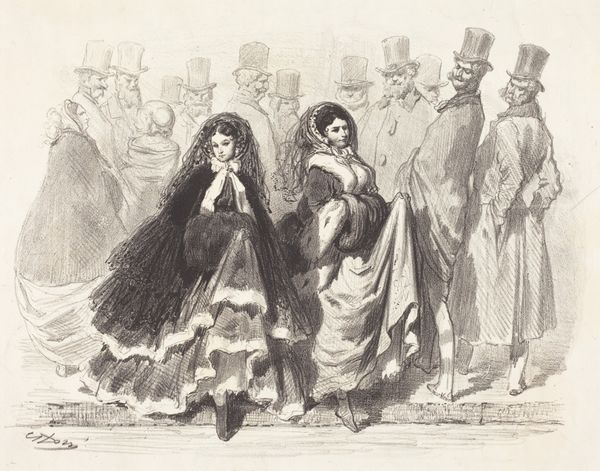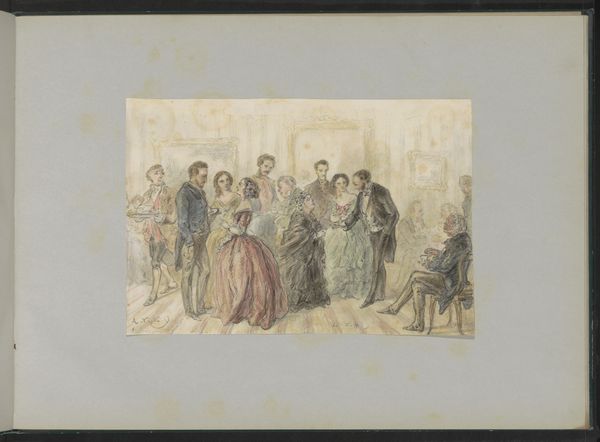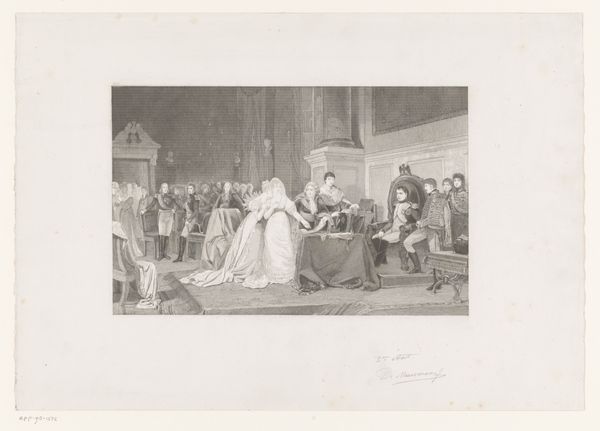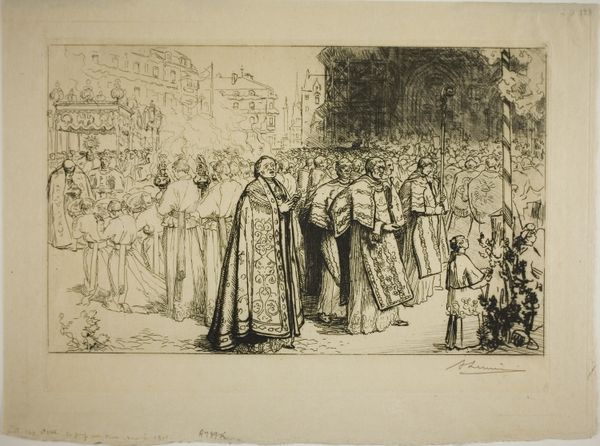
Dimensions: Sheet: 9 1/16 × 11 7/16 in. (23 × 29 cm)
Copyright: Public Domain
Editor: Gustave Doré’s “Pauline Viardot Gambling at Baden-Baden,” created around 1862, is a lively pencil drawing on paper. The scene, packed with figures, depicts what I assume is a gambling room, and it feels so energetic. What do you see in this piece beyond the initial impression? Curator: Well, focusing on the materials themselves, the humble pencil on paper belies the grand subject matter – an opera singer in a gambling hall. Baden-Baden was known for its casinos. Gambling was labor and pastime. But beyond that, Doré's quick strokes suggest mass production of images. Think of this drawing's relationship to prints, to distribution, to the marketplace. He wasn’t just depicting a scene; he was creating a commodity, feeding a desire for glimpses into high society. Where do you see the evidence for a “commodity”? Editor: That’s a really interesting way to look at it. I guess I was focusing more on the narrative. The clothing of the people is very interesting. But thinking about how it would be reproduced shifts the perspective, it seems more about consumerism… It sounds like art making has changed in order to satisfy customers? Curator: Exactly! The looseness of the pencil work facilitated quick reproduction. Doré's genius was recognizing how to tap into the public's appetite. The scene almost becomes secondary to the *means* of presenting the scene, through accessible, reproducible lines. Editor: So, it’s less about Pauline Viardot herself, or the gambling, and more about how Doré leveraged his skills and materials to produce images for mass consumption. That changes everything. Thanks! Curator: Indeed. Analyzing the physical properties and distribution mechanisms allows us to understand its position within a system of cultural and economic exchange, blurring lines of high art and mass media. It shows us art and labor!
Comments
No comments
Be the first to comment and join the conversation on the ultimate creative platform.

